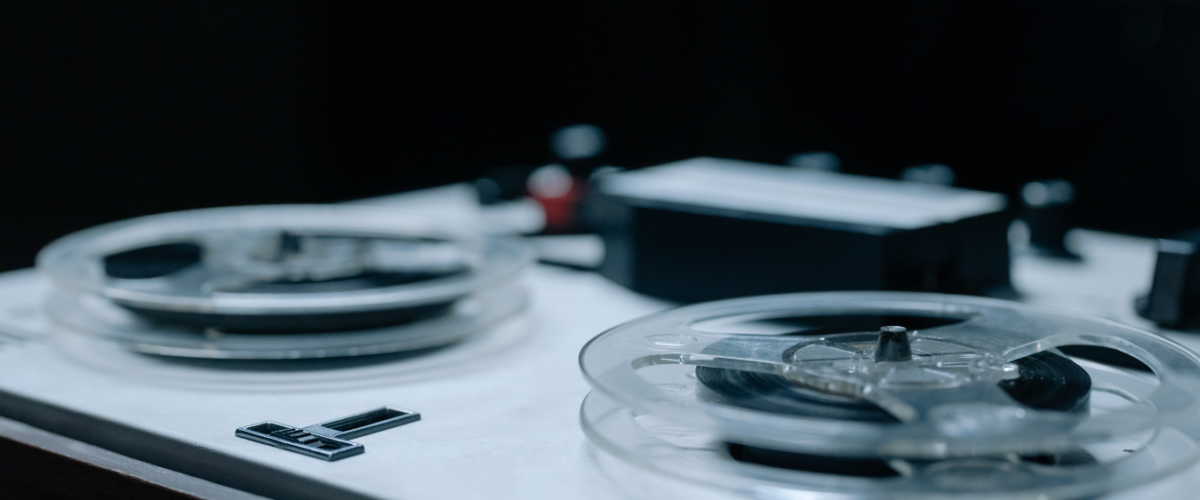This series analyses the changes proposed by the Criminal Law Bills in 2023. This article was first published as part of Project 39A’s Bharatiya Nagarik Suraksha Sanhita Bill, 2023 and Bharatiya Sakshya Bill, 2023: A Substantive Analysis, a complete version of which can be accessed here.
This post analyses the key changes proposed to the use of audio-video recording during investigation under the Bharatiya Nyaya Suraksha Sanhita Bill, 2023.
In the BNSS there has been an overall emphasis on the use of technology at every stage of the criminal legal process. This piece will specifically consider the key changes proposed regarding the use of audio-video recording during investigation.
New additions to Audio-Video Recording during Investigation
| SN | BNSS | CrPC | ||
| Provision | Scope | Requirement for Audio-Video[1] | ||
| 1 | Clause 105 ‘Recording of search and seizure through audio-video electronic means’ | Applicable to search and seizure under Chapter VII ‘Processes to Compel the Production of Things’ and Clause 185 ‘Search by police officer’ | Search and seizure, including the process of seizure memo, ‘shall be recorded through any audio-video electronic means preferably cell phone’ | None |
| 2 | Clause 185 ‘Search by police officer’ | ‘Search by police officer’ | Search conducted ‘shall be recorded through audio-video electronic means preferably by mobile phone’ | This proviso is absent in corresponding Section 165 ‘Search by police officer’ |
| 3 | Clause 176 ‘Procedure for investigation’ | Sub-clause (1): Any statement (made before the police) under this ‘sub-section’ | Option for statement to also be recorded through ‘any audio-video electronic means preferably cell phone’ | This proviso is absent in corresponding Section 157 ‘Procedure for investigation’ However, Section 161 ‘Examination of witnesses by police’ provides the option of recording any statement made to the police ‘by audio-video electronic means’. This has also been retained in the corresponding Clause 180 BNSS Section 154 ‘Information in cognizable offences’ provides that the statement of certain victim-informants with physical or mental disabilities ‘shall be videographed’. This has also been retained in the corresponding Clause 173 BNSS |
| Sub-clause (3): Process of collection of forensic evidence from the scene of crime by forensic experts, for offences punishable with 7 years or more. The mandatory nature of this provision is subject to State government notification, within 5 years | Mandatory requirement for videography of the process of collection of forensic evidence on mobile phone or any other electronic device . | This sub-section is absent in the corresponding Section 157 ‘Procedure for investigation’ | ||
| 4 | Clause 183 ‘Recording of confessions and statements’ | Sub-clause (6): Process of recording of statement before the magistrate of temporarily or permanently, physically or mentally disabled victims of certain offices including crimes against women | In this particular context, the statement before the magistrate ‘shall be recorded through audio-video electronic means preferably cell phone’ | Replaces ‘shall be videographed’ in otherwise similar provision Section 164(5A) |
| 5 | Clause 54 | Test identification parade involving identifying witnesses with temporary or permanent physical or mental disabilities | In this particular context, the identification process ‘shall be recorded by any audio-video electronic means’ | Replaces ‘shall be videographed’ in otherwise similar provision Section 54A |
Exclusions
| CrPC | BNSS |
| Section 164 ‘Recording of confessions and statements’ ‘Provided that any confession or statement made under this sub-section may also be recorded by audio-video electronic means in the presence of the advocate of the person accused of an offence’ | Clause 183 ‘Recording of confessions and statements’ ‘Provided that any confession or statement made under this sub-section may also be recorded in the presence of the advocate of the person accused of an offence’ |
I. Background
The inclusion of audio-video in investigation is a positive move geared towards ensuring greater transparency and accountability in police investigation, protecting the rights of both accused and victims, and improving the quality of evidence.
The inclusions made by the BNSS are in line with the general trend of expanding the use of technology in investigation, as evident from legislative developments and judicial discourse.
The CrPC currently includes the option of audio-video recording of witness statements before the police (s.161) and confessions and other statements before the Magistrate (s.164(1)).[2] There are also mandatory provisions requiring videography of procedures involving persons with physical or mental disability, including the recording of police statements of such victim-informants in cases of sexual violence (s.154), statements before the Magistrate (s.164(5A)), and test identification proceedings (s.54A).[3] Additionally, the POCSO Act, also provides the option of use of audio-electronic means for recording the statement of a child victim. Courts have time and again emphasised the need for the utilisation of audio-video recording, for inspection of crime scene/spot;[4] dying declarations; statements of victims of sexual assault; post mortems in custodial death cases,[5] to name a few.
While audio-video has the potential to strengthen the quality of evidence, it is also more susceptible to alteration, modification and transposition, through direct intervention or unintended corruption of a digital record. Recognising this, the Supreme Court in Arjun Panditrao Khotkar,[6] settled conflict in jurisprudence, and held that the procedure under Section 65B IEA must be mandatorily provided for the admissibility of an electronic record. This procedure is essential in order to ensure the authenticity and accuracy of electronic evidence.
The Supreme Court in Shafhi Mohammad not only emphasised the significance of audio-video technology to aid the police in crime scene investigation, but also drew attention to the importance of building institutional and infrastructural capacity for its effective and mandatory implementation. During the proceedings in this case, infrastructural and institutional limitations, across states, in the effective use of audio-video technology in investigation were highlighted including lack of funding; equipment; systems for collection, and secure storage and transfer of electronic record; training; and forensic facilities.[7] These were identified as barriers to mandatory requirement for the use of audio-video technology during investigation.
II. Implications of changes proposed under the BNSS
a. Search and Seizure
Considering the risk of manipulation of evidence and possibility of misuse of police power, the mandatory inclusion of audio-video recording in search and seizure proceedings is a laudable addition proposed. This requirement under Cl.105 extends to all search and seizure procedures, under Chapter VII and Cl.185. However, the scope of Cl.105 is restricted to the search of a place, and appears to exclude the search of a person and seizure of articles from their person. A clear limitation of Cl.105 is that provisions related to search of place of arrest (Cl.44) and search of a person arrested (Cl.49) are clearly excluded from the mandatory requirement of audio-video recording under Cl.105. Since Cl.105 pertains to the process of ‘search of a place or taking possession of any property, article or thing’ under the provisions specified, it should include the search of a person suspected of concealing relevant articles, under Cl.103(3) (under Chapter VII).
Nevertheless, Cl.105 significantly extends the scope of audio-video recording during search and seizure, to include the process of preparing a list of seized items and the signature of witnesses. Transparency in search and seizure proceedings, in this manner, has the potential to deter against fabrication of evidence and subversion of the safeguard requiring the presence of independent witnesses to these proceedings.
Cl.105 also requires that this audio-video recording be submitted before the District Magistrate, Sub-divisional Magistrate or Judicial Magistrate of first class ‘without delay’. Under Cl.103, which provides the procedure for conducting search and seizure, (6) and (7) clearly provides that the occupant of place searched/person searched be provided a copy of the seizure memo.
However, an important aspect to be noted is that there is no clear provision in the BNSS that entitles the concerned persons, including the accused, access to the audio-video recordings.
b. Other Investigation
Cl.176(3)’s requirement for videography of the process of collection of forensic evidence is another move towards greater transparency and accountability in evidence gathering, and a safeguard against irregularities and manipulation.[8]
Cl.176(1) also provides an option of audio-video recording of any statement made during police investigation. The scope of this proviso is wide enough to include disclosure statements of accused before the police, besides the statements of other witnesses (audio-video recording for which is already permitted under s.161 CrPC, retained in Cl.180 BNSS). This is an important safeguard to deter against torture and coercion of the accused during custodial interrogations. However, a crucial limitation is that this is not a mandatory requirement. Further, it is unclear whether the scope of Cl.105 is broad enough to include audio-video recording of the subsequent process of recovery evidence, which is most susceptible to irregularities and fabrication. Considering the fact that investigating agencies rely heavily on recovery evidence, mandatory audio-video recording of the process of collection of this evidence would be an important inclusion in the bill.
The BNSS, however, misses the opportunity to introduce the requirement for audio-video recording of other crucial processes during investigation like spot inspection (with the exception of Cl.176(3)), inquest proceedings or post mortem of the deceased.
The BNSS does not strengthen existing provisions for audio-video recording under the CrPC. For instance, audio-video recording of statements by witnesses to police continues to be optional under Cl.180. Only test identification proceedings involving witnesses with physical or mental disabilities are required to be recorded through audio-video means, under Cl.54, and other identification proceedings remain excluded from this requirement.
Consistent with the CrPC, the BNSS retains the mandatory requirement for videography of police statements, and audio-video recording of statements before the magistrate for certain vulnerable victims with physical or mental disabilities, under Cls.173(1) and 183(6) respectively.
c. Confessions and Statements before the Magistrate
The BNSS completely omits the existing safeguard for audio-video recording of statements and confessions before the magistrate.[9]
Audio-video recording of statements before the magistrate was an important safeguard to protect the rights of witnesses, particularly victims of sexual assault. It prevents the loss of evidence due to threat or coercion, which may lead to witnesses withdrawing their statements or turning hostile. With this omission in the BNSS, the protection of audio-video recording of statements before the magistrate is only available to certain victims under Cl.183(6), but not provided to other witnesses.
The audio-video recording of the confession along with the presence of a lawyer, is an important safeguard against false confessions. Before recording any confession, a magistrate is required to ascertain its voluntariness and ensure that the accused is free from police duress, as per prescribed procedures. The provision for audio-video recording of confessions is an additional means through which the voluntariness of the confession can be confirmed, through an assessment of the physical condition, body language and manner of speaking of the accused. The BNSS misses the opportunity to strengthen the existing protection under s.164 CrPC, by making it mandatory, and expanding its scope to include audio-video recording of all the procedural safeguards essential to confirm the voluntariness of the accused’s confession. Instead, this omission completely deprives the accused of an important safeguard existing in the law.
d. Access to Audio-Video Recording during Investigation
The significance of audio-video recording as a safeguard during investigation is only possible if access to these recordings are provided to the witnesses/victim-informants, but also to the accused. This would enable them to substantiate their claims regarding the non-compliance of any procedural safeguards by the police during the investigation.
The language of Cl.230 under the BNSS may be broad enough to include audio-video recording. Cl.230 requires the accused and victim (if represented by a lawyer) to be supplied with the police report and all necessary documents, including statements and confessions.[10] The provision does not explicitly mention supply of audio-video recordings.
However, the term ‘document’ is wide enough to include digital and electronic records.[11] Further, Cl.230, expands the existing s.207 CrPC, to also explicitly include supply of documents in electronic form, and permits the Magistrate to furnish copies of any documents considered to be ‘voluminous’ through electronic means, in addition to the provision for allowing them to inspect this record from the court either personally or through an advocate. Nevertheless, in the absence of explicit mandate for supply of audio-video recording, access to these documents by the accused and victim may be largely dependent on the discretion of the Magistrate or the police.
III. Scope of Audio-Video Recordings
Cl.2(a) BNSS defines ‘audio-video electronic’ as ‘any communication device’ that can be used for the purposes of recording investigation as prescribed.[12] The BNSS uses both terms ‘audio-video’ recording and ‘videography’, and there is a lack of clarity about the respective scope of these terms. It is unclear whether ‘audio-video’ recording includes a requirement for both audio and video, or provides an option of recording either audio or video of the proceedings. Since the BNSS also uses the term ‘videography’, there is a possibility that the scope of this recording would be limited to visual recording, without the corresponding audio.
In the BNSS, the term ‘videography’ has been used in the context of recording the process of collection of forensic evidence and recording information by the police from a vulnerable victim-informant. All other provisions in the BNSS use the term audio-video. While recording of victim statements under Cl.173(1) cannot happen without audio recording, audio is also a useful safeguard for transparency in collection of forensic evidence under Cl.176(3). While most provisions[13] specify cell phone[14] as the preferred method of audio-video recording, Cl.176(3) particularly provides for ‘videography’ to be carried out through ‘mobile phone’.
IV. Use of Mobile Phones for recording Audio-Video Evidence
While there is some inconsistency and lack of clarity in the terminology used, there is little guidance on the nature of recording device to be used. Without such clarity, there is an apprehension of variance in the audio and video recordings, which might lead to poor quality of the electronic record.
There are benefits of using mobile phones, because they are easily accessible by police officers at any point during investigation. However, the BNSS does not specify that designated equipment be used for investigation. Therefore, without legislative clarity, cell/mobile phones referred to may include personal phone devices of investigating officers.
There are several concerns with the susceptibility of electronic record to alteration, modification and transposition, either through manual intervention or unintended corruption of a digital document. These fears are heightened when a personal communication device is being used for audio-video recording during investigation. Further, it would be more difficult to prove the integrity and proper chain of custody for an electronic record originating from a personal communication device, which is in the constant possession of the police officer. It would also have adverse consequences on the privacy of investigating officers. Further, there are additional risks of contamination or corruption of the electronic record due to malfunctioning of a personal communication device. The confusion over the applicability of the special procedure under Cl.63 BSB (corresponding to s.65B IEA) to prove authenticity and accuracy of electronic record as an admissibility requirement raises more apprehensions regarding the use of personal communication devices by police offices.[15]
Concerns of misuse and illegal circulation of sensitive evidence, including statements recorded under Cls.176(1) and 183(6), are aggravated when the evidence is originally recorded on personal communication devices.
V. Infrastructure and Institutional Capacity
The most significant hurdles to the adoption of audio-video technology in investigation is the absence of equipment and the lack of trained personnel to employ these technologies effectively. There is a serious need for guidelines to set a standard for the quality of the equipment, as well as to establish systems and infrastructure regarding the safe and secure storage and transfer of electronic evidence, ensuring that it is protected from being leaked, deleted or corrupted.
[1] Emphasis added.
[2] Introduced vide Code of Criminal Procedure (Amendment) Act, 2008.
[3] Introduced vide Criminal Law (Amendment) Act, 2013.
[4] Shafhi Mohammad v. State of Himachal Pradesh (2018) 2 SCC 801.
[5] Criminal Trials Guidelines Regarding Inadequacies and Deficiencies, In re, (2021) 10 SCC 598; Santosh v. The Director Collector, Madurai District and Ors. W.P. (MD) No. 12608 of 2020, Madras High Court, order dated 02.12.2020, <https://www.mhc.tn.gov.in/judis/index.php/casestatus/viewpdf/869346>, last accessed on 20.10.2023.
[6] Arjun Panditrao Khotkar v. Kailash Kushanrao Gorantyal & Ors. (2020) 7 SCC 1.
[7] Shafhi Mohammad v. State of Himachal Pradesh SLP (Crl.) Nos. 2302 of 2017, 9431/2011 and 9631-9634/2012, Supreme Court, order dated 30.02.2018 <https://main.sci.gov.in/supremecourt/2017/6212/6212_2017_Order_30-Jan-2018.pdf>, last accessed on 20.10.2023; Shafhi Mohammad v. State of Himachal Pradesh Petition(s) for Special Leave to Appeal (Crl.) No(s).2302/2017, Supreme Court, order dated 18.11.2021, <https://main.sci.gov.in/supremecourt/2017/6212/6212_2017_32_30_31408_Order_18-Nov-2021.pdf>, last accessed on 20.10.2023.
[8] Refer to section on Forensic Expert Evidence, Page 57 for complete analysis of this provision and its implications. This note is limited to the videography requirement.
[9] Cl.183 BNSS.
[10] Corresponding to s.207 CrPC.
[11] Cl.2(c) BSB.
[12] A new addition in the BNSS.
[13] Cls.176(1), 105, 185, 183(6).
[14] ‘mobile phone’ in Cl.185.
[15] Refer to section on Admissibility of Electronic Records, Page 95.





